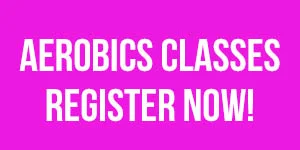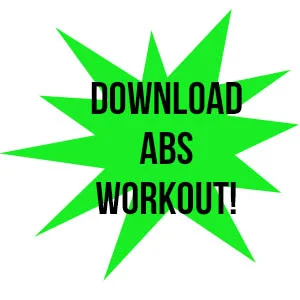The fitness industry is heavily saturated with fitness facilities and instructors, personal trainers, coaches, and more. A top-notch website is an excellent way to differentiate yourself from the competition, get exposure, and attract clients regardless of which part of the fitness industry you represent. Your online presence presents a 24/7 face for your brand. The Internet platform from which you can share your expertise and inform potential clients about the services and products you have to offer.
Your website should provide consumers with information, education, and even entertainment in an exciting and engaging manner. An aesthetically pleasing site with a high level of user experience will attract clients, keep them on your website, and encourage them to retain your services, purchase your products, or utilize your facility. Let’s consider website features that today’s consumers have come to expect and help you to deliver a first-rate online experience.
IDENTIFY YOUR GOALS
The first challenge is to identify your target audience and what you hope to accomplish through your website. If your goal is to attract serious weightlifters who are looking for a no-frills gym experience, the design and offerings on your site will be quite different than if your target audience is the 55 and over crowd who want to stay active and see the “gym” as a socializing opportunity. Compile a list of keywords and phrases to use that your audience will use in searches and will simultaneously help you maintain a consistent focus throughout your website.
DESIGN
Consider working with a web designer who will help you build a website that not only reflects your brand’s philosophy but is also aesthetically pleasing to visitors. Design choices should follow any branding guidelines you’ve established to ensure your digital material reflects any print material you use. A professional web designer will work with you to make color and font choices that best make your content stand out and display your content as legibly as possible.
Device Responsive
Your website should be device responsive and mobile friendly. A responsive website responds to specific mobile operating systems based on the parameters of the device being used. This means that unnecessary images are hidden, others are optimized, and the navigation is condensed.
A mobile-friendly website doesn’t rely on mobile operating systems. It displays site pages in exactly the same manner on all devices. Images are scaled based on the size of the device and nothing is hidden. There is no difference in the presentation of content from the desktop version to a mobile version.
A consistent experience regardless of what type of device is being used has become a consumer expectation. Visitors will quickly leave a site that doesn’t provide that sort of experience. Also, search engines like Google rank mobile-friendly sites higher in their search results and actually penalize websites that aren’t responsive. Ensuring that your site is mobile friendly and device responsive will help maintain the benefits of any SEO efforts you’ve made on your site.
Trouble-free Navigation
An experienced web designer will create a site with intuitive and user-friendly navigation. He will establish clear paths on which visitors can move from one page to the next. Newer website templates on platforms like Squarespace offer modern new options like floating headers or the choice of navigation in the footer to increase the user-friendliness for handheld mobile users. To help you gain an objective understanding of your site’s functionality, ask someone outside of your organization to work through your site and provide feedback on the experience.
Search Engine Optimization
To help your site rank well with Google and other search engines, a web designer will make sure all aspects of your website are optimized. He or she will work on a number of factors including things like website architecture, page title tags, meta descriptions, and site content. With the complexity of the search engine algorithms used to return search results, it is important to offer a site that not only appeals to clients but is also search engine friendly.
CONTENT
Your main landing page should focus on your key brand message. Text should be presented in a manner that allows visitors to quickly scan a page and understand who you are, what you do, and how you can help them. Bullet points, lists, and images are much more engaging than blocks of text and help people more easily find the information they are looking for.
A designer will help you understand how to integrate images and videos to increase the engagement level of your site. Feature high-quality, professional photographs and videos to highlight your physical space, equipment, instructors, classes, etc. Do remember that many people watch online video without sound so include subtitles in addition to any audio you pair with the video posts.
Frequently Asked Questions (FAQs)
A page on your site dedicated to FAQs is, basically, a self-help feature for your visitors. It is a resource that offers quick response, 24/7, and saves your time for more engaging interactions with clients. Include the answers to common questions you and your staff receive via email, phone calls, or in person. You can also use answer portions to direct clients and potential clients to other pages of your website that more thoroughly address the topic.
Another benefit of an FAQ page is the opportunity to overcome common objections or misconceptions and improve your conversion rate. You can also integrate keywords and phrases to help your SEO efforts. The list also provides a quick resource for you and your staff when responding to client emails. A quick copy and paste and you can move on to the next message.
Pricing and Payment
It alleviates potential client frustration when you clearly communicate the cost of your services and products. It is also helpful to include information regarding cancellation and refund policies on the same page as your pricing. Multiple payment options will help clients feel more at ease, especially when you offer third-party gateways like PayPal and ApplePay. Online payments encourage the use of card or other digital payments, reducing the risk of having cash on site at your physical location and the complications that can arise with check payments.
Clear Calls to Action
You will increase the conversion rate for your website when you feature clear and concise calls to action. Feature brightly colored buttons that use a bold font to tell site visitors exactly what to do and what they will gain by doing it. Each page of your website should have a call to action button that uses persuasive language to encourage whatever conversion is relevant to the content on that page.
Social Media
Establish a symbiotic relationship between your website and your social media accounts. Feature social network widgets in the header or footer of your site to encourage people to check out and follow your brand’s profiles on social platforms. Use social media posts to direct traffic to your website. You can use redirection to specific landing pages if you are looking to increase business for a particular service, class, or product. If your actual site address is cumbersome, consider creating and using a vanity URL that minimizes the characters used.
INDUSTRY SPECIFIC TIPS
Forms
A great addition to each page of your site is a button directing visitors to an inquiry form. Encourage potential clients to fill out the (minimal) information you request so you can personally communicate with them regarding their goals and needs. If you require the completion of a pre-exercise questionnaire, you can also feature that on your website. This will save time during a client’s initial visit and keep you from having to read scribbled chicken scratch writing. If you offer free consultations, you can include questions that will help you understand your clients’ goals, reasons for contacting you, the type of training they are looking for, the frequency with which they intend to approach their goals, etc.
Staff Information
Have a “Meet the Instructors” (or whatever you call them) page that features information regarding the experience and expertise of anyone your clients might interact with at your physical location. Include professional, high-quality photos - either headshots or action pics to show clients how fabulously energetic and healthy your staff members are. You can rotate a “Meet the Staff” video clip as well.
Schedules
Whether it is a simple listing of business hours or an in-depth listing of classes, instructors, space assignments, etc., have a dedicated spot on your website for that information. Potential clients will want to see the breadth and depth of the opportunities you offer and current clients will want to know all the details of the classes or sessions they are thinking about attending. This also establishes a place to announce any changes that might come up in your scheduling.
Descriptions
Provide a full explanation of what a service includes. If it is a personal training session, clearly outline what occurs during the session. If it is a group class, explain the intensity level, the focus of the class and so on. It is also helpful to describe the benefits someone will gain as a result of taking part in the session or class.
Registration
You will save yourself a fair amount of administrative time if you enable clients to register online for upcoming classes or training sessions. Consider packages or block registration to help those clients who always want to attend, say, the Tuesday evening spin class. You may also find a better return when you allow clients to buy and sign up for multiple training sessions at one time. Consider offering a discount to people who take advantage of the opportunity. This section of your website is another excellent place to remind clients of your cancellation and refund policies.
Additional Products
Many health and fitness businesses generate additional revenue by selling brand clothing, supplements, instructional videos and more. Include an e-commerce function on your website and offer shipping as well as the option of purchasing online and then picking up at your facility to encourage clients to regularly visit. Videos and other digital offerings should be offered as downloads and optimized for mobile use.
CONCLUSION
Your website should definitely increase your brand awareness and recognition but it should also be a regular source of conversions. A sleek, informative, and engaging website will attract clients, keep them on your site, and encourage them to convert. Use analytics available through website hosting platforms and Google to understand how different parts of your website are performing and make tweaks when you find areas that are under performing or outright failing to produce.
The team at Strategy Driven Marketing can use their website experience and expertise to help you communicate who you are, what you offer, and why you are the best option to help people meet their fitness goals. We’ve also got your marketing, social media, and graphic design needs covered! Trust SDM to help you take your fitness business to the next level. Contact us today!




